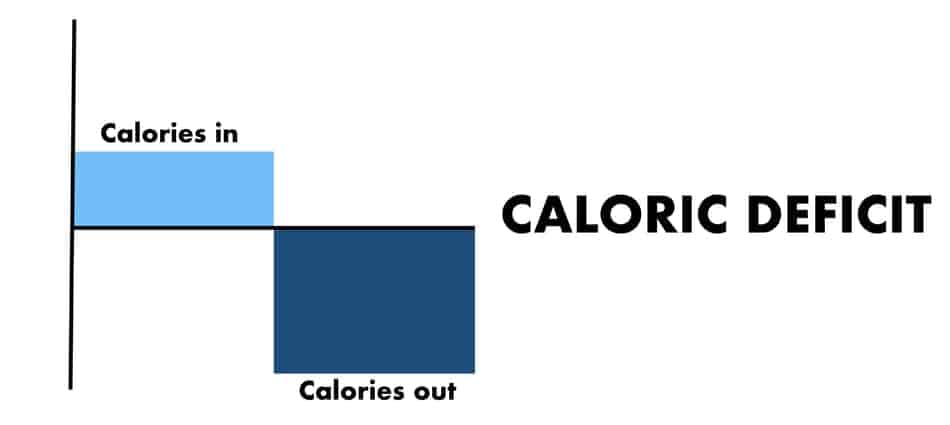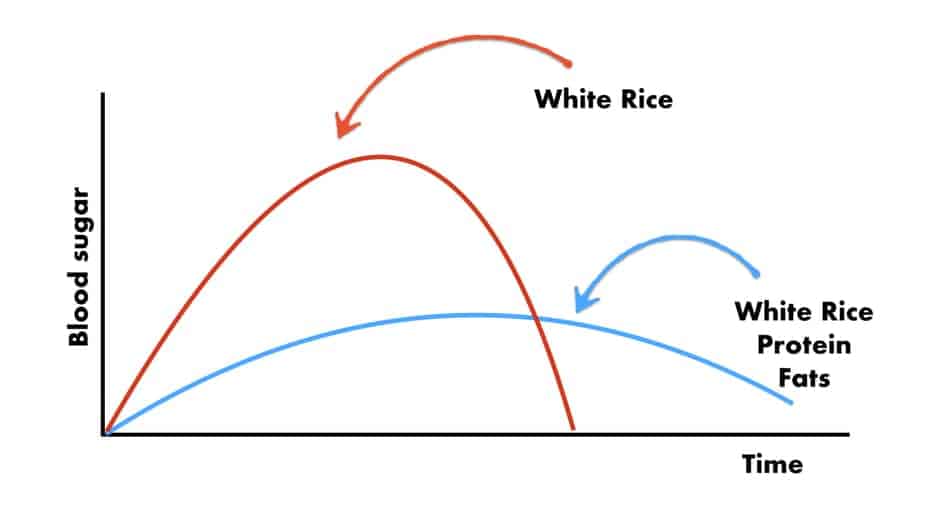
One meal a day is a great approach to start eating less and lose weight, however, some people may feel confused about eating certain food groups. So in this article, I will be talking about is it ok to eat rice while doing OMAD.
You can eat rice on OMAD. Rice is a staple food that contains many bioactive compounds, fiber, and nutrigenomic properties. Also, eating one meal a day can reduce peristaltic mobility, so having a good portion of rice with a meal can help with digestion.
In fact, some of the countries in Asia are famously known to have rice three times a day as a staple food. At the same time, overconsumption of white rice has been linked with type 2 diabetes.
Is It Okay To Eat Rice On OMAD?
So. Is it ok to eat rice on OMAD?
Eating rice while doing OMAD is acceptable as long as you’re in the caloric deficit. In fact, doesn’t matter if you are eating rice, bread, or pasta. If you’re in a caloric deficit, you will lose weight.

That’s why there is so much confusion around the foods. People were eating rice every day for millennials and nobody was ever complaining about any health problems. But now you have a lot of research showing that there is a possibility of risk.
So the rice dilemma has been around for number of years.
On the one side, you have people who eat rice three times a day and have no health issues. But just because people in Asia eat rice three times a day doesn’t mean that’s why they are not having issues with type 2 diabetes, obesity, or high cholesterol.
Correlation doesn’t mean those two things are related.
For instance, the divorce rate in New Mexico is the highest in the whole USA. That also correlates perfectly per capita with the highest consumption of margarine.
Now, obviously, those two things aren’t in any way linked. So the fact they are correlated doesn’t mean they are related.
It can be anything.
Rice On OMAD
People in Asia may have fewer health issues because they are eating less in general, moving more, taking fewer medications, have less stress, better weather conditions so they’re more active, fewer life expectations, or simply eating less processed food.
On the other side, you have studies proving that refined grains and white rice have been associated with a higher risk of type 2 diabetes and you see people who must watch their carb intake (source).
But here’s the problem.
Those types of cohort studies are usually done by researchers using simple food questionnaires in countries like the Middle East and North Africa, where diabetes is going up and rice is also a staple food.
But again, correlation doesn’t mean causation.
Does it mean that health issues are done by rice? Or it’s maybe the low-income jobs, poor access to fresh and clean water, overconsumption of processed foods, high stress, lack of medical support, and challenging life, in general, all contribute to physical and mental health.
So it’s hard to point fingers on rice alone.
Another thing is a combination of foods. The already mentions questionnaires can measure the rice, but what about everything else?
We can measure per capita how much rice they consume. But they didn’t say anything about the amount of fat and protein in the diet.
Which is so important.
Because diet high in protein and fat is known to lower the glycemic index in all of the foods (source).

As a result, the pancreas won’t release as much insulin as they would if you just eat pure white rice.
And I don’t believe there are many people out there who eat rice on its own.
So means even if you’re eating rice or pasta, as long as you have proteins and fat in the diet, your sugar won’t spike so much, comparing to eating white rice alone.
But on those type of studies you won’t see exactly how much protein they have eaten.
So here is my conclusion.
The likelihood of obesity, type 2 diabetes, high cholesterol, or any other metabolic syndrome problem is associated with high-calorie intake, not low.
This means that as long as you’re in the caloric deficit, doesn’t matter if you’re eating rice, congee, or rice pudding, you will lose weight.
How do you know you’re in the caloric deficit? If you’re eating only one meal a day, there is no question that you will be eating more than you should.
Eating Rice On OMAD
The most complex part of all is that people are literally afraid of eating foods like rice. Years ago one of my clients asked me about is it ok to eat any carbs while doing intermittent fasting.
She was doing low-carb diets for the last few years and she was literally afraid to let go of her belief that carbs are bad.
Because she was on low-carb for so long, in her mind it was like an installed plug-in that was forbidding her to choose rice. Like a chip from The Matrix movie.
And once she did, once she somehow breaks down and eat carbs, she would immediately default and start feeling bad about herself.
So it took some time for her to finally let go of this belief that carbs are bad. Lucky for her, she can now enjoy all the food that she wants and still be slim. So remember that our beliefs and habits will have a massive impact on the thoughts, emotions, and of course the decisions that we make about the food.
The research about white rice and its associations with diabetes isn’t clear and it’s hard to rush the conclusions based on the few studies. So there is no 100% straightforward answer. It’s not a yeah or “meh” kind of thing.
Correlation doesn’t mean causation and just because some cultures have thrived on eating rice, it’s not guaranteed that there is no risk.
However, to be frank, with one meal a day as long as you’re eating your rice with other protein-rich food and healthy fats, you’re on the safe side.
Go Further with OMAD
This article is part of the OMAD: What To Eat To Stay Full For Longer
In the following articles, I show you all the related aspects necessary to get started with OMAD and knowing what to eat for the best results.
Learn More: Click here to read the blog post on how much protein on omad
